What do you really need?
This shopping list offers a detailed breakdown of every essential item to include in your backpack, providing all the information necessary for your journey.
Shopping list
Walking the Camino de Santiago is a unique journey, and what you need can vary depending on your preferences and the specific route you choose. However, there are essential items that every pilgrim should consider bringing:
✔️ Sturdy walking shoes
Invest in comfortable, well-fitting walking shoes or boots that you've worn in before your trip. Blisters can be a significant issue if your footwear isn't right.
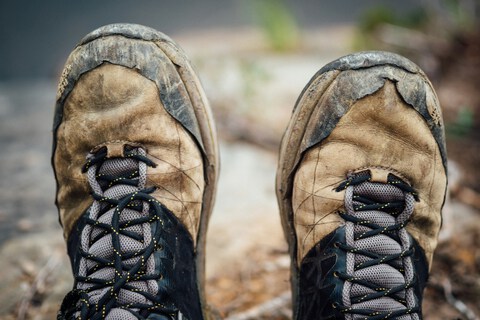
"Give a girl the right shoes, and she can conquer the world." — Marilyn Monroe
Lightweight hiking boots or trail shoes are typically recommended for the Camino. They provide good ankle support, which is essential for handling the varied terrains you'll encounter, from cobblestone streets to muddy paths. Shoes should be sturdy but not too heavy, with good ventilation to keep your feet dry and comfortable.
Key features to look for:
- Fit: Make sure the shoes fit well with enough room to wiggle your toes, but snug enough to prevent sliding, which can cause blisters.
- Support: Look for shoes with good arch and ankle support to minimise the risk of injuries.
- Breathability: Breathable materials help manage moisture and prevent blisters.
- Water resistance: Waterproof or water-resistant footwear can be beneficial, especially during rainy seasons or on dewy mornings.
Additional tips:
- Break them in: Wear your shoes for several weeks before your pilgrimage to break them in. This helps avoid blisters and discomfort on the trail.
- Choose the right socks: Pair your shoes with moisture-wicking socks to keep your feet dry and reduce the risk of blisters. Consider carrying a few pairs of socks with different thicknesses to switch out as needed.
- Consider insoles: Custom or high-quality insoles can provide additional comfort and support, which can be a game-changer on long walking days.
- Be prepared for changes: Your feet may swell after several days of walking, so it's wise to choose shoes that can accommodate this change, perhaps by adjusting the laces or opting for slightly larger shoes.
✔️ Backpack
A lightweight, well-constructed backpack with padded straps is crucial. It should be big enough to carry your essentials but not too large to weigh you down.
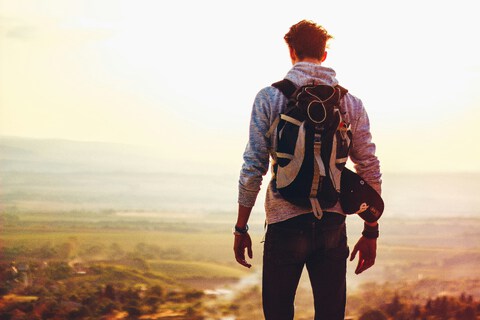
"Your backpack is both your burden and your support—choose wisely, pack lightly, and journey far."
For your journey on the Camino de Santiago, choosing the right backpack is crucial for ensuring comfort and functionality. Here's a short guide on selecting the ideal backpack and some tips to help you along the way:
- Size: Aim for a backpack with a capacity of about 30 to 40 liters. This size is ample enough to carry your essentials for several days but small enough to prevent overpacking and unnecessary strain on your back.
- Fit: Look for a backpack with an adjustable harness system. It should fit snugly on your back with the weight evenly distributed between your shoulders and hips. Make sure it has a padded hip belt and shoulder straps for added comfort.
- Material: Opt for a lightweight, durable material with water-resistant properties. Many backpacks also come with a rain cover which can be invaluable during unpredictable weather.
- Compartments: Multiple compartments can help organize your items conveniently. A top-loading backpack with a separate bottom compartment is ideal, as it allows easy access to gear without needing to unpack everything.
Additional tips:
- Pack light: Limit your backpack weight to about 10% of your body weight. This helps in reducing the strain on your body during long walking days.
- Test your pack: Before you embark on the Camino, take a few long walks with your backpack fully loaded. This will help you adjust the straps and load, ensuring comfort during your pilgrimage.
- Essential accessibility: Keep essentials like water, snacks, sunscreen, and your rain gear within easy reach. Many backpacks have side pockets and loops that are perfect for these items.
- Packing strategy: Use packing cubes or compression sacks to organize your belongings and maximize space. Roll your clothes instead of folding to save space and reduce wrinkles.
- Security: Consider a backpack with lockable zippers for added security, especially when staying in communal lodging.
With the right backpack and a smart packing strategy, you can greatly enhance your experience on the Camino de Santiago, making it a comfortable and memorable journey.
✔️ Weather-appropriate clothing
Dress in moisture-wicking and breathable layers. Be sure to pack for the season you'll be walking in and check the weather forecast in advance.
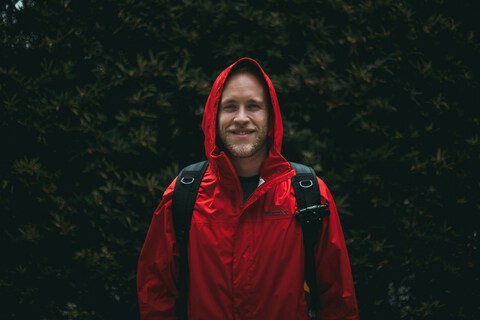
"On the Camino, each layer you wear carries a story; make it light, comfortable, and meaningful."
When preparing for the Camino de Santiago, selecting weather-appropriate clothing is essential to ensure comfort and protection throughout your journey. The Camino can traverse diverse climates, so being prepared for varying weather conditions is key. Here’s a short guide on the type of clothing you should consider, along with some practical tips:
Layered clothing
- Base layer: Opt for moisture-wicking materials that keep sweat away from your skin, helping you stay dry and comfortable.
- Mid layer: A lightweight fleece or wool sweater is perfect for providing insulation, especially during cooler mornings or evenings.
- Outer layer: A waterproof and breathable jacket is essential to protect against rain and wind. Ensure it’s lightweight and packable.
Durable hiking pants
Choose pants that are comfortable for long walks, offer some stretch, and are quick-drying. Convertible pants, which can be zipped off into shorts, are a versatile option for unpredictable weather.
Hats and accessories
A wide-brimmed hat or a cap will protect you from the sun, while a lightweight wool hat will keep you warm during colder days.
Additional tips:
- Always check the season
Research the typical weather conditions for the time of year you plan to walk the Camino. This will help you pack more effectively. - Be prepared for changes
Weather can be unpredictable, so having layers that you can easily add or remove allows you to adjust to changing conditions throughout the day. - Opt for quick-drying fabrics
Quick-drying fabrics mean you can wash clothes along the way and expect them to dry overnight, reducing the amount of clothing you need to carry. So no cotton allowed.
By carefully selecting your clothing and being mindful of these tips, you'll be well-prepared to face the diverse climates of the Camino, ensuring a more enjoyable and comfortable pilgrimage.
✔️ Sleeping Bag
A lightweight, compact sleeping bag is essential, especially if you plan to stay in albergues (hostels) where bedding may not be provided.

After a long day’s walk, you are going to need your 8 hours of sleep.
For your journey on the Camino de Santiago, selecting the right sleeping bag can greatly enhance your comfort during rest stops. Most of the alberques provide some sleeping gear but it is way more fresh to sleep in your own sleeping bag. Here’s what you should look for in a sleeping bag and some tips to make the most of it:
Ideal sleeping bag
- Lightweight and compact: Choose a sleeping bag that is lightweight and can be compressed into a small size. This makes it easier to carry in your backpack without adding significant weight or bulk.
- Suitable temperature rating: Consider the time of year you'll be walking the Camino. For summer, a sleeping bag rated for +10°C (50°F) should suffice, but for spring or autumn, look for something rated around +5°C (40°F) or even lower if you tend to get cold easily.
- Material: Opt for a sleeping bag with a synthetic fill as it insulates well even when damp and dries quickly. Synthetic materials are also usually more cost-effective and less heavy compared to down.
Additional tips:
- Sleeping bag liner: Using a sleeping bag liner not only keeps your sleeping bag clean but can also add an extra layer of warmth during colder nights. Liners are lightweight and easy to wash and dry.
Choosing and maintaining your sleeping bag correctly will help ensure you get a good night's sleep, recharging you for the day ahead on the Camino.
✔️ Rain Gear
A lightweight, packable rain jacket or poncho is essential. Rain can be unpredictable on the Camino.
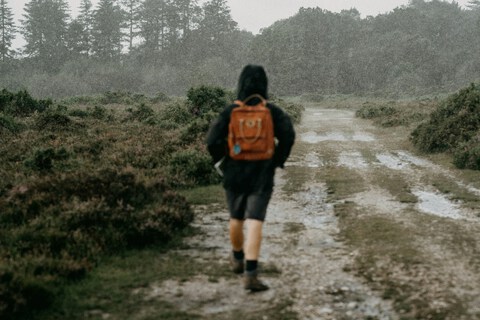
"Rainy days on the Camino are nature’s confession booths, where thoughts clear and hearts lighten."
When walking the Camino de Santiago, preparing for all types of weather is crucial, especially rain. Here’s a brief guide on the kind of rain gear you should consider, try different options everyone has their own preference. Each one helps you stay dry and comfortable:
Essential rain gear for the Camino
- Waterproof jacket: Choose a lightweight, breathable, and waterproof jacket. Look for one with a hood that can cover your head and neck adequately. Taped seams and adjustable cuffs are great features to prevent water from seeping in.
- Rain Pants: Waterproof pants are invaluable for keeping your lower body dry. They should be easy to slip on and off over your walking shoes or boots.
- Poncho: A poncho can be a versatile option as it covers not only your body but also your backpack. Make sure it’s durable and covers enough area to keep your gear dry.
- Waterproof backpack cover: If you don’t use a poncho that covers your backpack, a waterproof cover for your backpack is necessary to protect your belongings.
- Waterproof hat or cap: A waterproof hat or cap can provide extra protection for your head, especially if your jacket's hood does not completely cover your head or provide enough visibility.
Tips for walking in the rain
- Layer appropriately: Wear moisture-wicking fabrics as your base layers to keep sweat away from your skin, and use your waterproof outer layers to protect from the rain.
- Protect your feet: Water-resistant or waterproof boots are essential. Consider gaiters to prevent water from entering your boots from the top.
- Dry out nightly: Whenever possible, dry out your gear overnight. Stuffing newspaper into shoes can help absorb moisture and maintain their shape.
- Pack dry bags: Use dry bags inside your backpack for an additional layer of protection for electronic devices and clothing.
- Stay visible: Choose rain gear in bright colors or with reflective materials, especially if you'll be walking in low-light conditions during rain.
By equipping yourself with the right rain gear and preparing with these tips, you’ll be more comfortable and can enjoy your Camino experience, even during rainy days.
✔️ Walking sticks
Some pilgrims find walking sticks helpful for balance and reducing strain on their knees, especially on steep terrain.
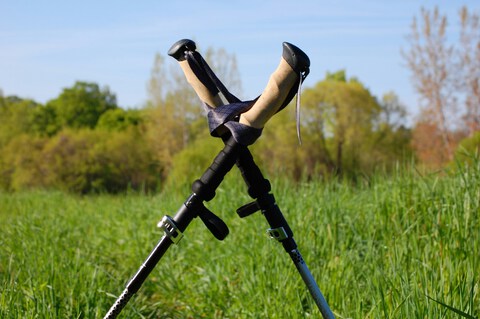
Trekking poles: not just support, but an extension of your will to conquer every mile of the Camino
When preparing for the Camino de Santiago, selecting the right walking sticks (or trekking poles) is important for comfort and support over the long distances and varied terrains you'll encounter. Here’s a brief guide to help you choose the right type and some tips on using them effectively:
Ideal walking poles
- Adjustable: Look for walking sticks that are adjustable. These allow you to change the length to suit different terrains—shorter for uphill and longer for downhill sections.
- Lightweight material: Opt for poles made from lightweight materials such as aluminum or carbon fiber. Carbon fiber is lighter and absorbs shock better but is typically more expensive and less durable than aluminum.
- Comfortable grips: Ensure the grips are comfortable. Cork handles absorb moisture and are softer on your hands, while foam grips are softer and lighter but may absorb sweat, and rubber grips are durable and good for cold weather.
- Wrist straps: Choose poles with adjustable wrist straps to help distribute the load and provide extra support and comfort. Ensure the straps do not chafe or restrict circulation.
Additional tips
- Correct adjustment: Always adjust the length of the poles based on the terrain. A general rule is to have your elbows at a 90-degree angle when holding the poles with the tips on the ground next to your feet.
- Proper technique: Use the poles to help maintain balance and to reduce the load on your knees, especially when descending. Plant the pole ahead of your step to help propel yourself forward.
- Use on various terrains: Learn to adjust the use of your poles for different surfaces. For instance, on rocky or uneven terrain, poles can help you test the stability of stones or give you an extra point of contact for balance.
Walking sticks can significantly enhance your Camino experience by providing support, reducing fatigue, and increasing your walking efficiency. Choose the right type and use them wisely to make the most of your pilgrimage.
✔️ Sun Protection
Sunscreen, sunglasses, and a wide-brimmed hat are essential for protection against the sun.
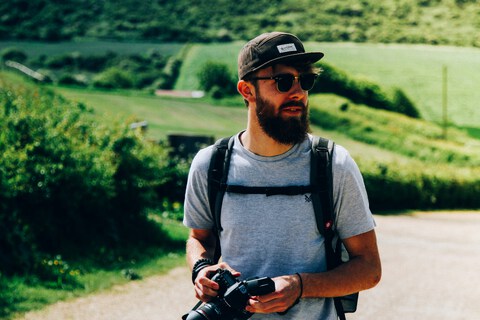
Let the sunshine be your guide, turning every step on the Camino into a golden memory.
When walking the Camino de Santiago, protecting yourself from the sun is crucial, as you’ll spend many hours outdoors, often during the peak sun hours. Here’s a concise guide on sun protection and some tips to keep you safe and comfortable:
- Broad-spectrum sunscreen: Choose a broad-spectrum sunscreen with an SPF of 30 or higher that protects against both UVA and UVB rays. Apply it liberally on all exposed skin and reapply every two hours, or more frequently if you are sweating heavily.
- Protective clothing: Wear lightweight, long-sleeved shirts, and long pants made from breathable fabrics to cover your skin. Many outdoor clothing items come with built-in UV protection (look for a UPF rating of 50+).
- Wide-brimmed hat: A wide-brimmed hat provides shade and protects areas often exposed to the sun, such as your face, neck, and ears.
- Sunglasses: UV-protective sunglasses are essential to safeguard your eyes from harmful rays, which can cause cataracts over time. Ensure they block 99% to 100% of UVA and UVB radiation.
Additional tips
- Apply sunscreen before starting: Put on sunscreen 15-30 minutes before you head out to ensure it has time to absorb into your skin.
- Seek shade during peak hours: If possible, plan your day so you can rest in shaded areas during the hottest part of the day.
- Stay hydrated: Sun exposure and heat can lead to dehydration. Drink plenty of water throughout the day to stay hydrated, which also helps your skin stay healthier.
- Use a neck scarf: Dipping a scarf or bandana in water and wearing it around your neck can keep you cool and provide additional sun protection.
By following these tips, you can better protect yourself from the sun’s rays while enjoying the spiritual and physical journey of the Camino.
✔️ First aid kit
Pack a basic first aid kit with items like adhesive bandages, antiseptic wipes, pain relievers, and blister treatment.
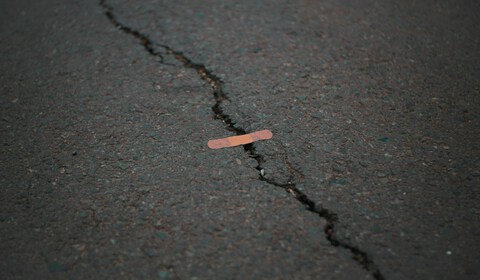
Helping one another is the true pilgrimage; every act of kindness heals us as we tread the sacred path.
When embarking on the Camino de Santiago, it's crucial to carry a well-stocked first aid kit that addresses both minor injuries and common ailments. Here’s what your kit should ideally include:
- Band-aids and blister plasters: A variety of sizes for different types of blisters or cuts.
- Antiseptic wipes: To clean wounds and prevent infection.
- Antibacterial ointment: For applying on small cuts or abrasions to fight infection.
- Anti-inflammatory gel: Such as ibuprofen gel, for sore muscles and sprains.
- Pain relief medication: Ibuprofen or acetaminophen tablets for general pain relief.
- Antihistamine cream: For allergic reactions or insect bites.
- Tweezers and scissors: For removing splinters or cutting bandages.
- Elastic bandages and tape: For sprains or to secure dressings.
- Safety pins: Useful for securing bandages or repairing gear.
- Saline solution: To wash out dirt from wounds.
Additional tips
- Know how to use everything: Before you leave, familiarize yourself with each item in your kit. Knowing how to use these supplies effectively can make a significant difference in managing health issues that may arise.
- Keep it accessible: Store your first aid kit somewhere easy to reach in your backpack. You don’t want to be digging through your bag for a bandage when you really need it.
- Regularly replenish: After use, take stock of what was used and replace it as soon as possible. This ensures your kit is always ready when needed.
- Hydration and prevention: Remember, prevention is the best cure. Stay hydrated, take regular breaks, and use sunscreen to avoid sunburn. Often, maintaining good health on the trail can minimise the use of your first aid kit.
With these supplies and tips, your first aid kit will be a fundamental support system on your journey, helping ensure that minor issues don’t turn into major setbacks.
✔️ Pilgrim's Credential
This is a passport-like document that you'll get stamped at various stops along the Camino. It's necessary to stay in some pilgrim accommodations and to obtain the Compostela at the end.
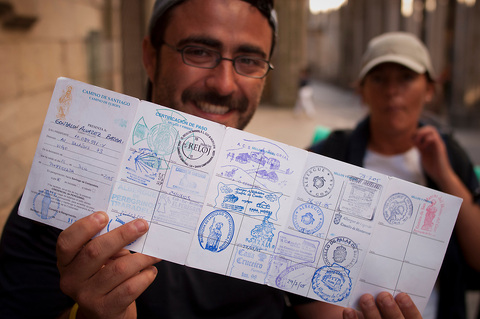
The credential binds us, each stamp a covenant between the pilgrim and the path, a witness to our inner journey.
The Pilgrim's credential, also known as the "Credencial del Peregrino," is an essential item for anyone walking the Camino de Santiago. It serves as your passport along the pilgrimage route and is a document that authenticates your status as a pilgrim. The Credential is necessary to gain access to the network of pilgrim hostels (albergues) along the route and is used to collect stamps from each location you visit, which serve as proof of your journey.
- Where to get it: You can obtain your Pilgrim's Credential from various sources such as pilgrim’s offices, some churches, confraternities, and associations dedicated to the Camino, or you can order one online before you leave. They are also available at many starting points on the Camino, such as Roncesvalles and Saint Jean Pied de Port.
- Collecting stamps: Make it a habit to get your Credential stamped at least twice a day. This is not only a requirement to qualify for the "Compostela" (a certificate of completion) at the end of your journey in Santiago de Compostela but also serves as a beautiful memento of your pilgrimage. You can collect stamps from albergues, churches, town halls, and some restaurants along the route.
- Keep it safe: Treat your Credential like a passport. Keep it in a waterproof pouch and in a secure location. Losing it can complicate your journey, especially when trying to access pilgrim-only accommodations.
The Pilgrim's Credential is not just a tool for accommodation or a way to collect stamps; it is part of the Camino experience. It connects you to the long history of the pilgrimage and to fellow travelers on the route, marking each step of your spiritual journey.
✔️ Guidebook and maps
A guidebook or smartphone app with maps and information about the Camino route can be very helpful.
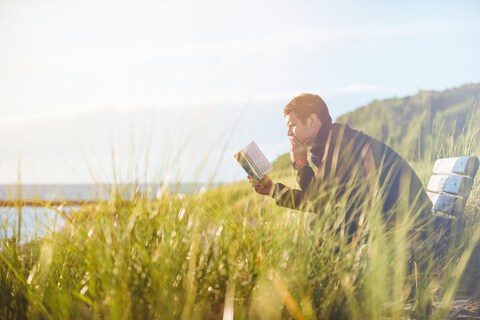
Guidebooks: maps for your journey, mentors for your spirit.
For your pilgrimage on the Camino de Santiago, having the right guidebook and maps is essential to navigate the route efficiently and enjoyably. Here’s a brief overview of what to look for in a guidebook and companion maps, along with some tips to enhance your journey:
1. Comprehensive guidebooks: Choose a guidebook that covers your specific Camino route in detail (e.g., Camino Francés, Camino Portugués). It should include information on the distance between stages, accommodation options, places to eat, and points of interest. Popular choices include "A Pilgrim's Guide to the Camino de Santiago" by John Brierley, which offers maps, photos, and a wealth of practical advice.
2. Smartphone apps: Apps like Camino Ninja, Camino Pilgrim and Wise Pilgrim offer digital maps, GPS tracking, and updated information on accommodations and services along the route. These apps can be particularly helpful as they often include user-generated updates about the condition of the path or availability of services.
✔️ Reusable water bottle
Staying hydrated is crucial. Many places along the Camino offer opportunities to refill your bottle.

The Camino whispers in steps and speaks in sips of water.
- Material: Opt for a durable, lightweight material like stainless steel or BPA-free plastic. Stainless steel is robust and maintains the temperature of your drink, whereas BPA-free plastic is lighter but may not provide insulation.
- Capacity: A water bottle with a capacity of about 1 liter (or 32 ounces) is ideal. This size strikes a balance between having enough water and not carrying excessive weight.
- Design: Choose a bottle with a secure, leak-proof cap to avoid any spillage in your pack. A wide mouth can also be beneficial for easy filling and cleaning. If you like, look for a bottle with a built-in filter, especially useful if you're concerned about the quality of refill sources.
- Convenience: Features like a loop or carabiner can be handy for attaching the bottle to your backpack for quick access without having to unpack.
- How much to drink: The amount of water you need can vary based on individual needs, weather conditions, and the intensity of your walk. A general rule is to aim for about 500 ml (about 17 ounces) per hour of walking. Adjust this based on the temperature and your personal sweat rate.
- Listen to your body: Drink whenever you feel thirsty. Thirst is a reliable indicator of when your body needs more fluids.
- Prevent dehydration: Start hydrating before you feel thirsty, especially on hot days. Dehydration can sneak up on you, leading to fatigue and decreased coordination, which can affect your walking performance and overall health. Consider adding electrolyte tablets to your water on hotter days or if you're sweating more than usual to replenish salts and minerals.
- Refill stations: Plan for where you'll refill your bottle. The Camino has many fountains and cafes where you can replenish your water supply. Make sure the water is potable or have a way to treat it if you're unsure.
- Start hydrated: Begin your day's walk well-hydrated. Drink water before you start walking in the morning to ensure you're not starting at a deficit.
✔️ Spirit of Adventure
Lastly, bring an open heart and a spirit of adventure. The Camino is as much about the journey as the physical items you carry.
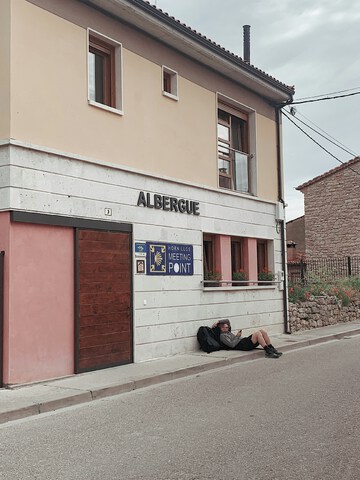
This journey is not only about physical endurance but also about embracing the unexpected, learning from each encounter, and growing from the experience. Here are some tips to cultivate and nurture this adventurous spirit:
- Be open to the unexpected
The Camino is full of surprises—some delightful, some challenging. Approach each day with flexibility and openness, ready to accept whatever comes your way with grace and enthusiasm. This mindset allows you to fully engage with the journey and the people you meet along the way. - Cultivate resilience
Challenges are a given on long journeys like the Camino. Whether it's dealing with physical discomfort or emotional highs and lows, resilience is key. Prepare mentally and physically, but also be ready to push through tough days, knowing that perseverance is part of the adventure. - Engage with fellow pilgrims
The Camino brings together people from all over the world, each with unique stories and insights. Engage with your fellow pilgrims; share meals, stories, and support. These interactions can enrich your journey, providing both companionship and diverse perspectives. - Take time to reflect
Allow yourself moments of solitude to reflect on your experiences and the lessons they bring. The Camino offers a unique opportunity for introspection and personal growth. Embrace these moments as they come, and you may discover more about yourself than you anticipated. - Embrace each moment
Instead of rushing towards the endpoint, savor each step. Notice the landscapes, the smells, the sounds, and the details of the path. Living in the moment enhances your appreciation of the journey and deepens the adventure.
Cultivating this spirit of adventure will not only make your Camino journey more memorable but also transform it into a profound life experience.
Ready to join the community?
Together we can embark on the journey you've always dreamed of, discovering your path alongside fellow pilgrims. We're here to guide you every step of the way, ensuring your experience is as fulfilling as you've imagined. Let's make those long-awaited dreams a reality and join today!